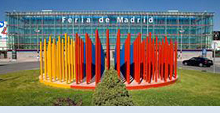 |
European Planetary Science Congress 2012
IFEMA-Feria de Madrid
23 – 28 September 2012, Madrid, Spain |
 |
|
SB8 UV to far IR reflectance spectra of carbonaceous chondrites to characterize > pristine asteroids targetted by sample-return missions |
| Convener: Josep Maria Trigo-Rodríguez | Co-Convener: Sonia Fornasier |
|
Oral Program
/ Fri, 28 Sep, 14:30–16:00
/ Room Venus
|
Chemical evidence indicates that the number of carbonaceous asteroids sampled in meteorite collections is lower than twenty. Among them, some are represented by ungrouped and extremely rare carbonaceous chondrites (CCs) that are only available thanks to the Antarctic recovery effort made by different teams during the last few decades. This session welcomes studies on carbonaceous chondrites, including the effects of aqueous alteration in primitive asteroids, and also encourage to submit high resolution reflectance spectra of CCs. Three are the main goals: 1) To increase the number of reflectance spectra usable for remote characterization of the targets of future sample-return missions (e.g. Marco Polo-R or Osiris-Rex); 2) To perform experiments to simulate space weathering processes and their influence in the reflectance properties of primitive asteroids. 3) To provide new clues on the role of aqueous alteration played in their parent asteroids/comets. Recent evidence found in CR, CM and CI carbonaceous chondrites suggests that the organic matter present in undifferentiated bodies experienced significant processing by the action of water in presence of clays and other minerals. Clays have been found to be associated with complex organics, and some minerals have probably participated in the interconversion of organic species in presence of water.

